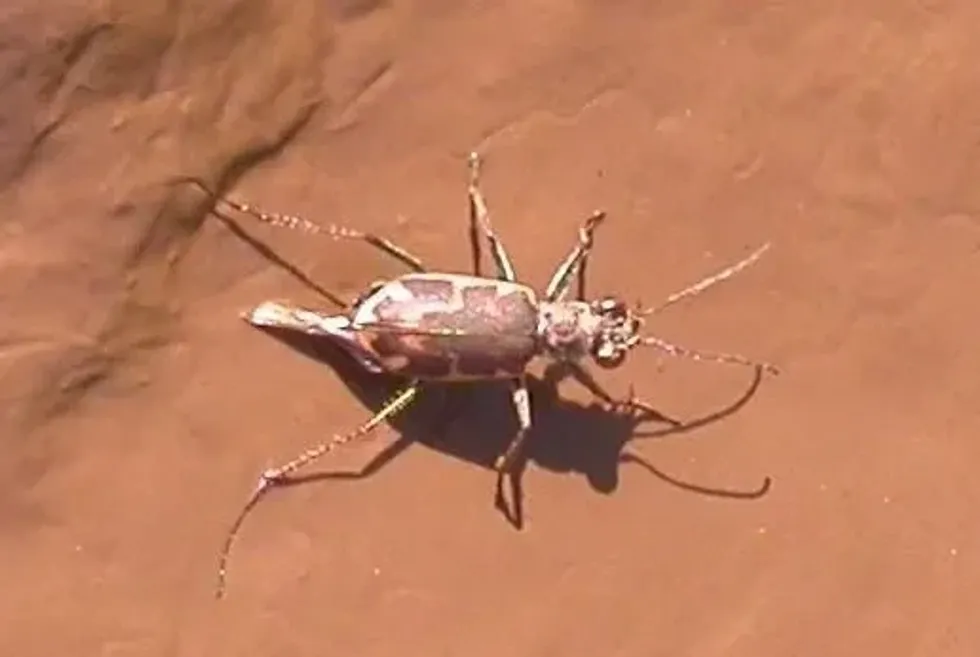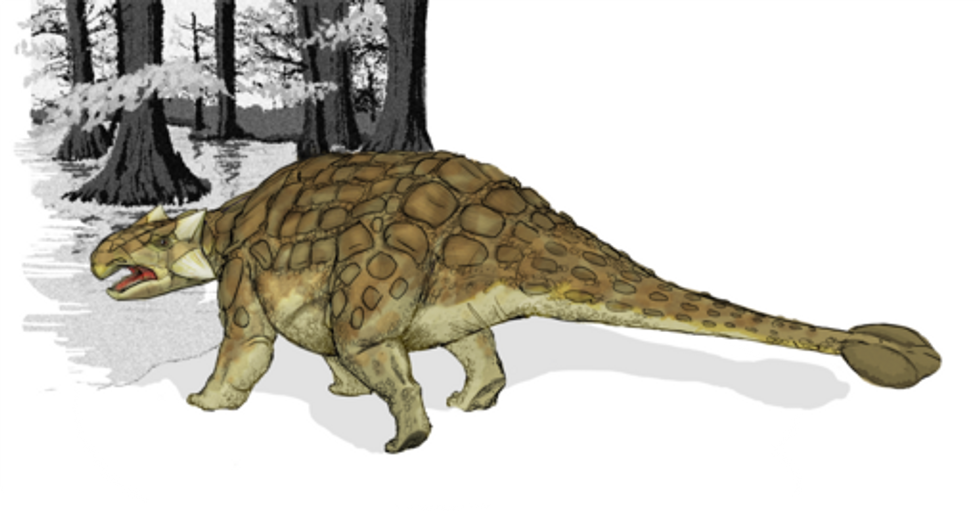The Salt Creek tiger beetle (Cicindela nevadica lincolniana) is one of the rarest insects alive in North America. This tiger beetle species is unique because it is found solely in the saline wetlands of Nebraska's Lancaster County, eastern Nebraska, and southern Sanders County.
Its body is usually metallic brown or olive green in color with a dark green underbelly; it has large mandibles to catch prey. The U.S.
Fish and Wildlife Service and Endangered Species Act has a final recovery plan for the protection of their populations. According to the last population check-in 2013, there are 365 individuals left, and their conservation status is listed as Endangered in the Red List.
If you like reading about the Salt Creek tiger beetle, check other interesting facts about the purple emperor butterfly and jewel beetle!
Salt Creek Tiger Beetle Interesting Facts
What type of animal is a Salt Creek tiger beetle?
The Salt Creek tiger beetle is a subspecies of tiger beetles.
What class of animal does a Salt Creek tiger beetle belong to?
The Salt Creek tiger beetle is a predatory insect belonging to the class of insects, Insecta.
How many Salt Creek tiger beetles are there in the world?
As of 2013, there are 365 individuals remaining of this beetle species.
Where does a Salt Creek tiger beetle live?
The Salt Creek tiger beetle habitat is in Lancaster County, Nebraska (United States).
What is a Salt Creek tiger beetle's habitat?
The Salt Creek tiger beetle habitat is along the banks of Little Salt Creek (a river tributary). It is found in the mudflats of saline wetlands.
These areas are called salt flats because the groundwater in this wetland contains rock with salts deposited by an ancient sea that once covered this area which is now known as Nebraska. Due to its specific habitat destruction and pollution, less than 10% of its original habitat remains.
Who do Salt Creek tiger beetles live with?
The Salt Creek tiger beetle is an endangered species of tiger beetle that is usually solitary like other beetles of the genus. One of the few times they can be seen in pairs is when mating or during the breeding season.
How long does a Salt Creek tiger beetle live?
The Salt Creek tiger beetle lives for around 12 months. It spends most of its time underground and only comes out to hunt. It spends only five to six weeks of its life as an adult and lives underground in the larval stage the rest of the time. Whether they have a one-year or two-year life cycle is undetermined.
How do they reproduce?
The Cicindela nevadica lincolniana reproduce by laying eggs. The female beetle of this endangered species lays the eggs in the moist, salty soil on the banks of creeks. After the egg hatches, the newborn larva digs a burrow and spends the rest of its larval stage in it and emerges in late May or mid-June.
What is their conservation status?
According to the ESA, the Salt Creek tiger beetle range map the area of natural habitat, and its population has decreased drastically. The Salt Creek tiger beetle numbers in 2013 were estimated to be 365. The Salt Creek tiger beetle status conservation is listed as Endangered in the IUCN Red List.
Salt Creek Tiger Beetle Fun Facts
What do Salt Creek tiger beetles look like?
Salt Creek tiger beetle (Cicindela nevadica lincolniana) adults are metallic brown or olive green in color with distinct markings on their back. Its underside is also a dark metallic green. The pattern on the back of this endangered species of beetle varies amongst the populations of subspecies.
It has long and thin legs that let it move very fast and catch its prey. They have large protruding mandibles, which are like jaws, using which they catch their prey.
They also have antennas. Adults also have wings that are the same color as their bodies. The larvae are small and white-colored.
How cute are they?
This beetle is very cute and small in size. Their iridescent bodies are beautiful, especially in natural light.
How do they communicate?
Beetles communicate using sound or chemicals. They can often smell each other, especially amongst sexes. They communicate using ultrasound by clicking their jaws or rubbing their feet together.
How big is a Salt Creek tiger beetle?
This tiger beetle (Salt Creek tiger beetle) is 0.5 in (1.3 cm) long and 2 in (5 cm) tall. They are half the size of gypsy moths.
How fast can a Salt Creek tiger beetle move?
The Salt Creek tiger beetle can move very fast. It has large eyes and excellent vision. Its long legs help it move fast to catch its prey. The exact speed of this species is not known.
How much does a Salt Creek tiger beetle weigh?
The tiger beetle (Salt Creek tiger beetle) is very small and light; its weight has not been calculated.
What are the male and female names of the species?
There are no male and female names for this tiger beetle species. They are simply referred to as male or female Salt Creek tiger beetle.
What would you call a baby Salt Creek tiger beetle?
The Salt Creek tiger beetle's baby does not have any specific name. Still, the juveniles of insects, in general, are referred to as larvae.
What do they eat?
The Salt Creek tiger beetle food chain consists of them eating insects smaller than them in their habitat. They are speedy and use their mandible to catch their prey.
The larvae are predatory too. They dig a burrow in saline wetlands and hide near the top; when an insect comes close to the burrow, they attack them and drag them down into the burrow. This tiger-like hunting technique is the root of their name.
Are they harmful?
They are not particularly harmful to humans, but it could hurt quite a lot if you touch this beetle and it bites you with the mandible. They are predatory beetles, so they pose a lot of threats to other insects which are smaller or weaker than them.
Would they make a good pet?
No, they would not make good pets. They are wild insects with a specific habitat; it is hard to replicate saline wetland at home.
They are sensitive to change in the environment, so they would not survive the change in habitat land. Since 6 October 2005, the U.S. Fish and Wildlife Service has listed the remaining beetles as an endangered species under the federal Endangered Species Act, making it illegal to own one.
Did you know...
The fastest insect in the world is a tiger beetle, Rivacindela hudsoni, whose speed is 5.6 mph (9 kph).
The Salt Creek tiger beetle is the rarest insect in North America. According to the surveys conducted by the University of Nebraska–Lincoln, 177 adults existed in 2000, 263 in 2008, and 194 in 2009. The efforts in the protection and conservation of this rare species are showing some promise; the population reached 365 in 2013.
Is the Salt Creek tiger beetle important to the environment?
Tiger beetles are considered an indicator species. Since it is susceptible to environmental change, they are used to monitor the overall health of its unique saline wetland habitat. Their depleting population brought attention to the habitat destruction to the development and pollution of the eastern Nebraska saline wetlands.
The Salt Creek tiger beetle's role in the ecosystem is to maintain the food chain; they feed on tiny pests and insects. In turn, spiders, robber flies, dragonflies, toads and lizards, prey on the Salt Creek tiger beetles.
Its environmental importance made the need for protection and conservation for their populations in saline wetlands essential.
Why are Salt Creek tiger beetles endangered?
The surveys conducted by the University of Nebraska–Lincoln proved the rarity of the species, which led to the beginning of research in 1991. Since 6 October 2005, the beetle has been listed as an endangered species by the U.S. Fish and Wildlife Service under the federal Endangered Species Act.
Initially, in 1991, six sites contained these species, but in 2005, it reduced to three areas encompassing only 35 acres (14160 sq. m).
The U.S. Fish and Wildlife Service federal agency initially had 1,933 acres (7822573 sq.
m) of critical habitat land for the conservation of these beetles but finally designated 1,110 acres (4492011 sq. m) for conservation and protection of the beetle from 5 June 2014 onwards. It includes saline wetlands along Little Salt Creek, Rock Creek, and Haines Branch Creek in Nebraska's Lancaster County.
It aims to support at least six populations in the designated area. Initially, the people living near Lancaster County didn't want to use the efforts of the federal agencies in its conservation as they worried about the economic strain it might cause.
In a recovery plan published in 2017, it was decided that the beetles will be reclassified as threatened if their population reaches 500-1,000 individuals in each protected area.
Here at Kidadl, we have carefully created lots of interesting family-friendly animal facts for everyone to discover! For more relatable content, check out these eastern Hercules beetle facts and fungus beetle facts for kids!
You can even occupy yourself at home by coloring in one of our free printable Salt Creek tiger beetle coloring pages.









